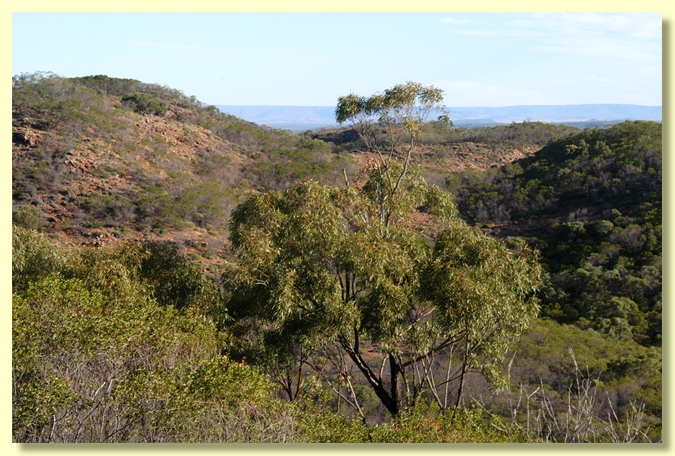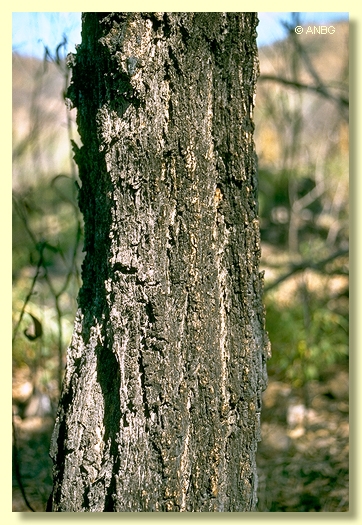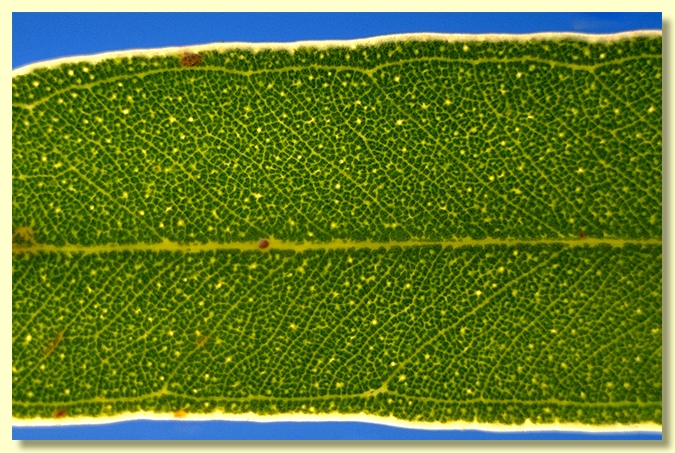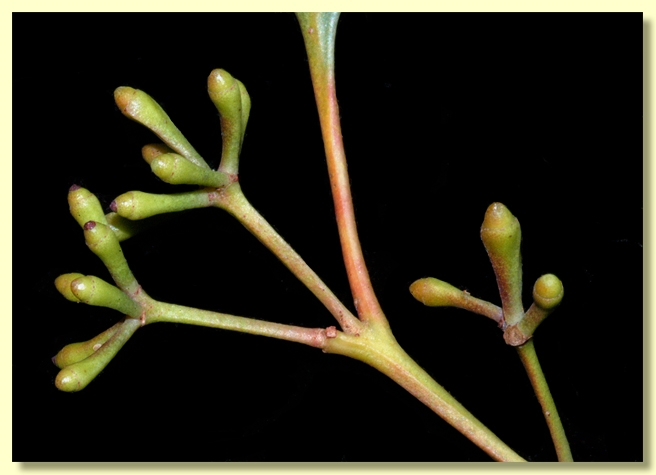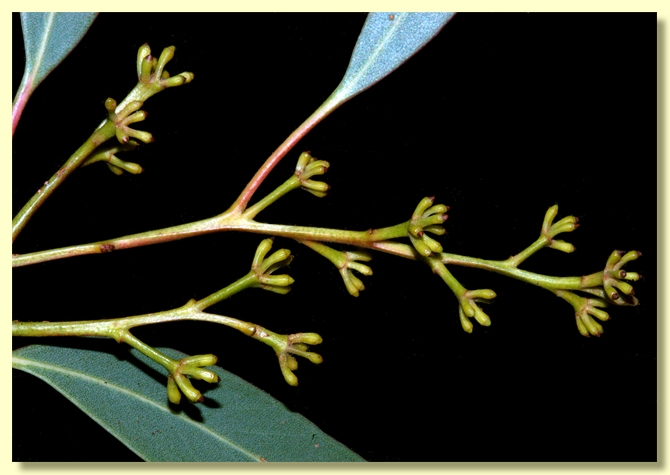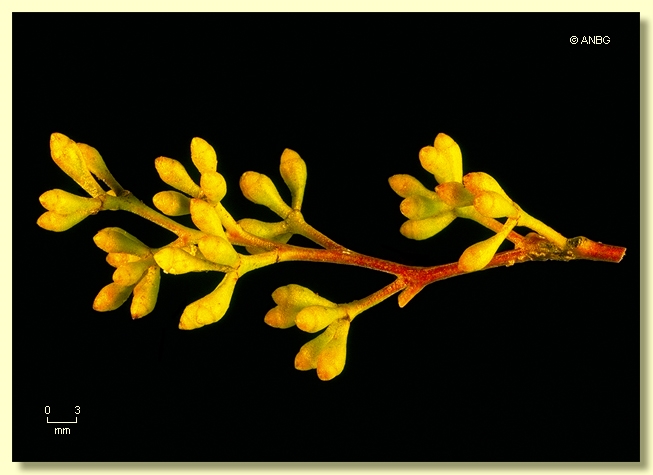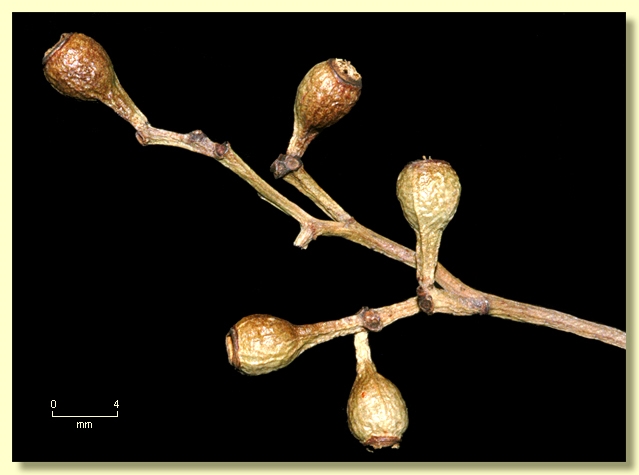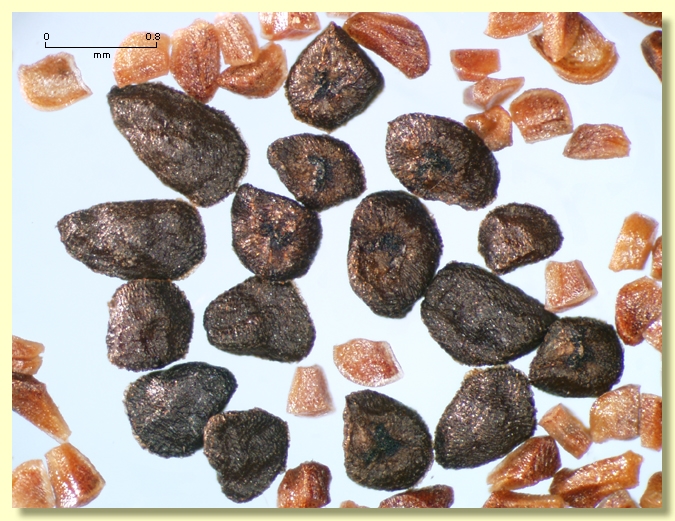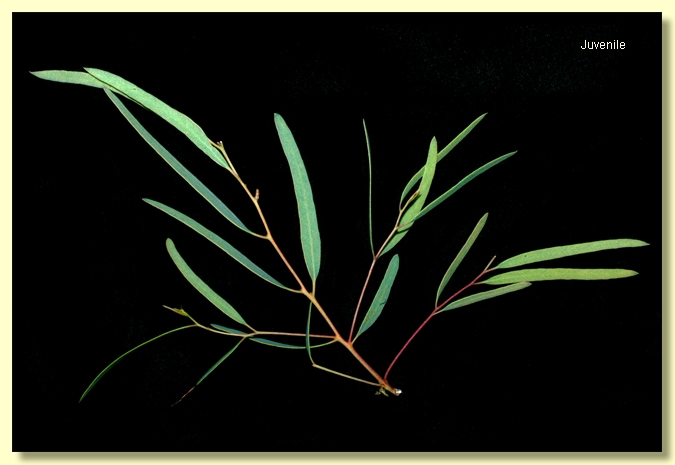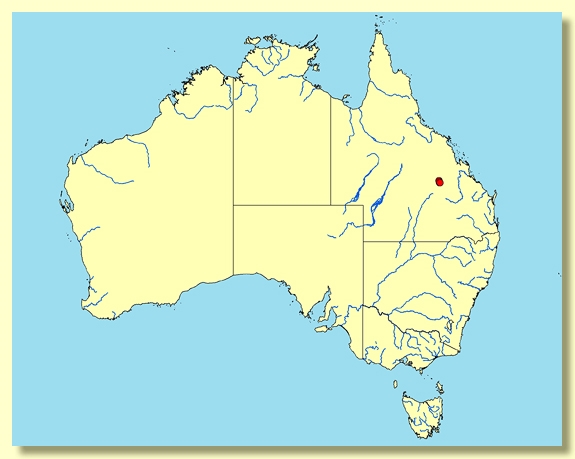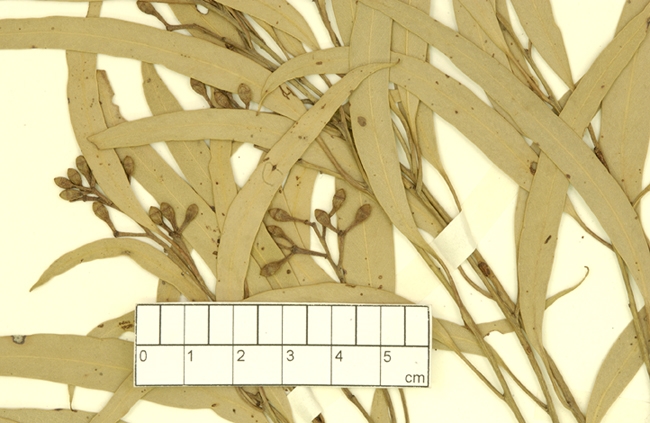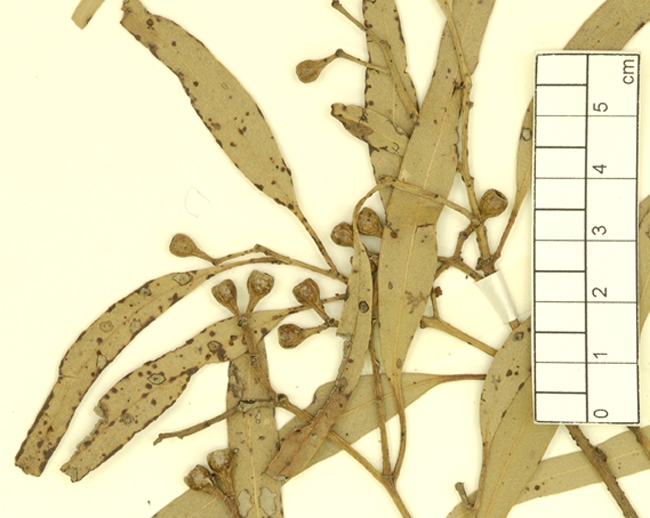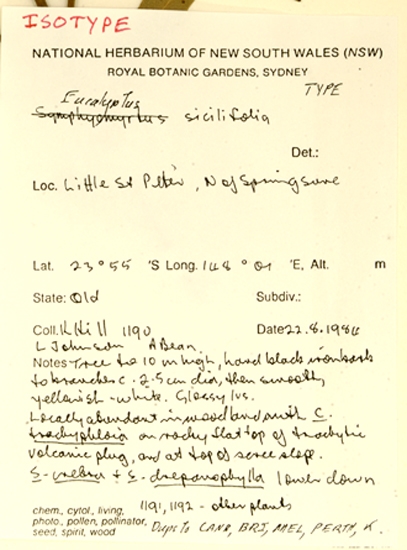Eucalyptus | Symphyomyrtus | Adnataria | Terminales | Rhodoxylon | Concolores
Euclid - Online edition
Eucalyptus sicilifolia
Tree to 10 m tall.
Ironbark throughout, dark grey to black. Forming a lignotuber.
Juvenile growth (coppice or field seedlings to 50 cm): stem square in cross-section; juvenile leaves opposite for a few pairs, becoming alternate, very shortly petiolate (to 0.3 cm), narrowly lanceolate, (4)6–13.5 cm long, 0.7–3.5 cm wide, glossy green.
Adult leaves alternate, petiole 0.7–1.7 cm long; blade narrowly lanceolate or falcate, 6.5–12 cm long, 0.7–1.6 cm wide, base tapering to petiole, concolorous, glossy, green, side-veins at an angle less than 45° to midrib, densely to very densely reticulate, intramarginal vein parallel to and just within margin, oil glands intersectional.
Inflorescence terminal compound or axillary compound in axils below this, peduncles (0.2)0.4–0.8 cm long, buds 7 per umbel, pedicels 0.2–0.4 cm long. Mature buds ovoid to obovoid, 0.5–0.6 cm long, 0.3–0.4 cm wide, scar present (outer operculum shed by about half mature bud size), inner operculum conical to rounded and narrower than hypanthium, stamens inflexed, outer filaments lack anthers (staminodes), anthers adnate, basally attached and positioned obliquely at filament tip, more or less cuboid, dehiscing by terminal pores, style long, stigma pin-head, locules 4 or 5, the placentae each with 4 vertical ovule rows. Flowers white.
Fruit on pedicels 0.3–0.4 cm long, cup-shaped to barrel-shaped, 0.4–0.7 cm long, 0.4–0.6 cm wide, disc descending, valves 4 or 5, near rim level or enclosed, staminophore persistent.
Seeds brown, 1–1.5 mm long, flattened-ovoid, shallowly reticulate, hilum ventral.
Cultivated seedlings (measured at ca node 10): cotyledons reniform to oblong; stems square in cross-section; leaves always petiolate, opposite for ca 5 nodes then alternate, narrowly lanceolate to linear, 3–8.5 cm long, 0.5–2.5 cm wide, base tapering, green.
Flowering has been recorded in August and October.
A small ironbark tree known only from two locations north of Springsure in south-east Queensland, namely Mt Zamia Lookout and Little St Peter Mountain where it grows on the rocky tops and surrounding scree slopes. It is characterised by its small, glossy green adult leaves, small ovoid buds, small barrel-shaped fruit and narrow lanceolate juvenile leaves.
Within its subgroup, i.e. subseries Concolores, E. sicilifolia is closest to E. virens, E. panda and E. beyeri. All four species have relatively small buds and fruit and linear to narrow lanceolate juvenile leaves. E. beyeri and E. panda are easily separated by having dull green to grey-green adult leaves (glossy green in E. sicilifolia). E. virens differs only slightly by having hemispherical fruit (barrel-shaped in E. sicilifolia).
It must also be closely related to E. suffulgens and differs marginally by having slightly smaller fruit (0.4–0.6 cm in E. sicilifolia and 0.6–1 cm in E. suffulgens). E. fusiformis, E. tetrapleura, E. corynodes and E. caleyi, other members of the subseries Concolores, have dull adult leaves (glossy in E. sicilifolia). E. dura and E. melanoleuca differ by having larger broadly lanceolate to ovate juvenile leaves (narrowly lanceolate and 0.9–3.5 cm wide for E. sicilifolia but ovate and 2.5–4.5 cm for E. melanoleuca and broadly lanceolate to ovate and 3–6 cm for E. dura).
All the species in the subseries Discolores, i.e. E. paniculata, E. decolor, E. placita and E. sp. Dorsiventralis, differ by having distinctly discolorous adult leaves (E. sicilifolia with concolorous adult leaves). E. sp. Dorsiventralis differs further by having four-sided fruit.
Within its area of occurrence there are other ironbarks which may be confused with E. sicilifolia. They are E. beaniana,E. crebra, E. decorticans, E. melanophloia and E. tholiformis, all of which differ in having buds with stamens all fertile and irregularly flexed.
Eucalyptus sideroxylon differs by having buds that hold the outer operculum into maturity and both the inner and outer operculum shed together at anthesis (no operculum scar).
MORE ABOUT IRONBARKS
Eucalyptus sicilifolia: Latin sicilis, a sickle and folium, a leaf, referring to the common curved sickle-shaped adult leaves.

